Transport for the North’s latest Northern Evidence Academic Forum on Wednesday 28 September, invited speakers to discuss the impacts of transport on people and communities.
All the speakers outlined the wider economic, social and wellbeing benefits that well-designed transport investment can have beyond journey time savings.
Monitoring and Evaluation Officer Jack Ford started by presenting Transport for the North’s progress on refreshing its Strategic Transport Plan and the evidence base supporting it on transport-related social exclusion and decarbonisation.
He was followed by two academics: Karen Lucas talking about alternative approaches to assessing and designing transport schemes, and Like Jiang talking about the importance of considering transport noise.
Joe McTigue from Northern Trains Limited, then talked about the wider benefits of the rail network for the North’s residents and the environment.
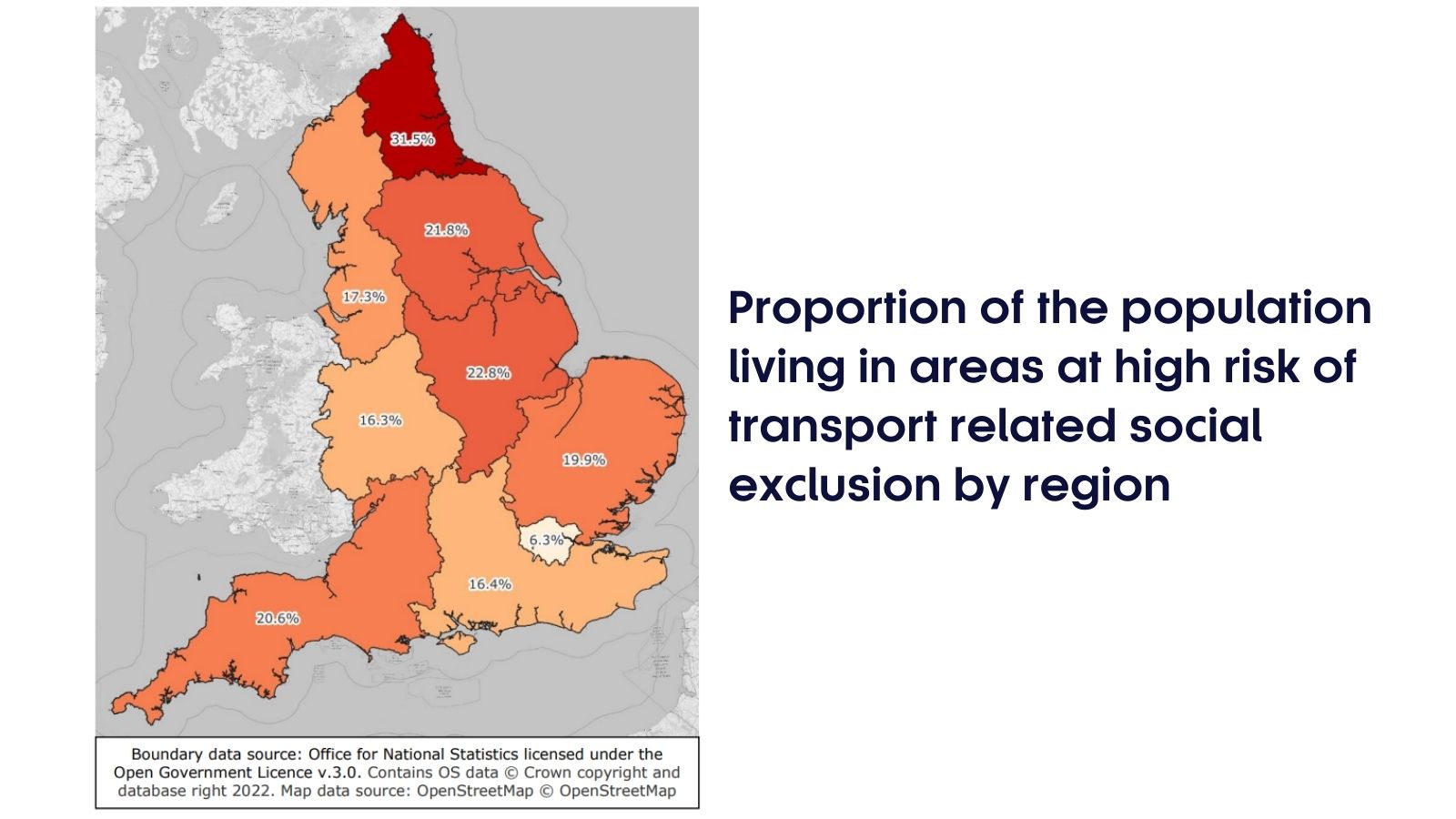
Karen Lucas argued transport planning has traditionally focused on the economic impacts of transport. There has been increasing focus on the environmental impacts, but social impacts often continue to be neglected due to methodological challenges and political priorities.
She said it cannot be fair that the current transport systems forces people who are struggling to afford food and energy into car ownership and leaves few options for many people without access to a car.
Many people experience different levels of transport disadvantage, and this extends well beyond the ‘transport poor’, including large proportions of the population.
Understanding social impacts properly means looking at distributional impacts, across spatial, temporal, and socio-demographic levels, and these impacts are cumulative. For example, people without access to a car who do not live near public transport links often face increased exposure to traffic risk and air pollution through poor walking infrastructure.
This means better understanding who benefits from and who is disadvantaged by the current transport system and from any potential new transport intervention. We should not assume we know what people want and need based on desk-based research. We need to talk to people and really understand their views and experiences, as TfN’s recent report on Transport Related Social Exclusion does.
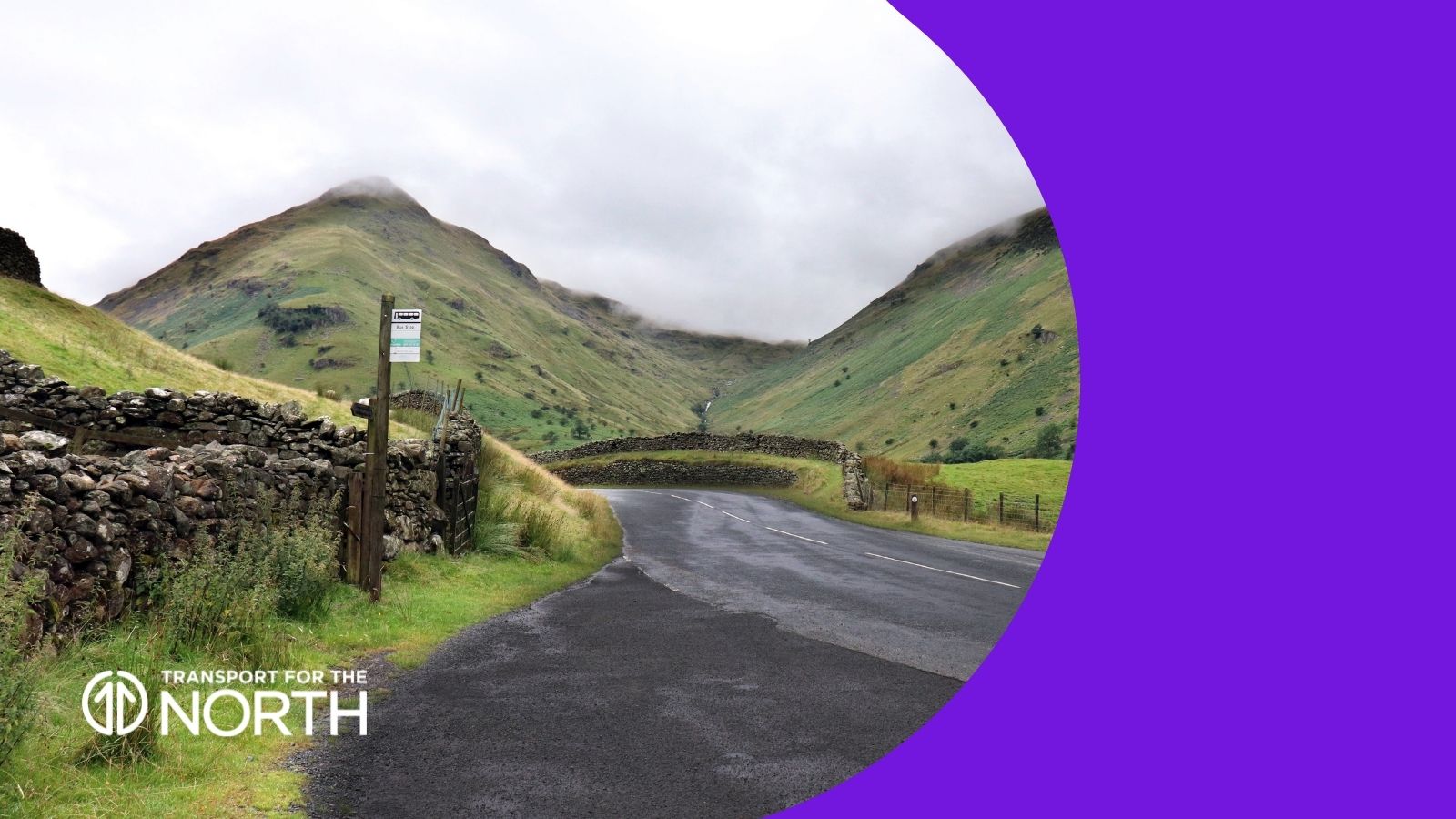
Professor Lucas argued we also need a systems approach rather than looking at single schemes in isolation. We need to understand how schemes interact with each other and with the land use system to get people where they want to be. This works both ways. We should build new homes in places that people can access, including non-car users if they do not exist already these new transport links should be built to support development sites. At the same time, new transport links tend to inflate house prices, which is positive for some people, but can lead to displacement of populations who can no longer afford to live in their area.
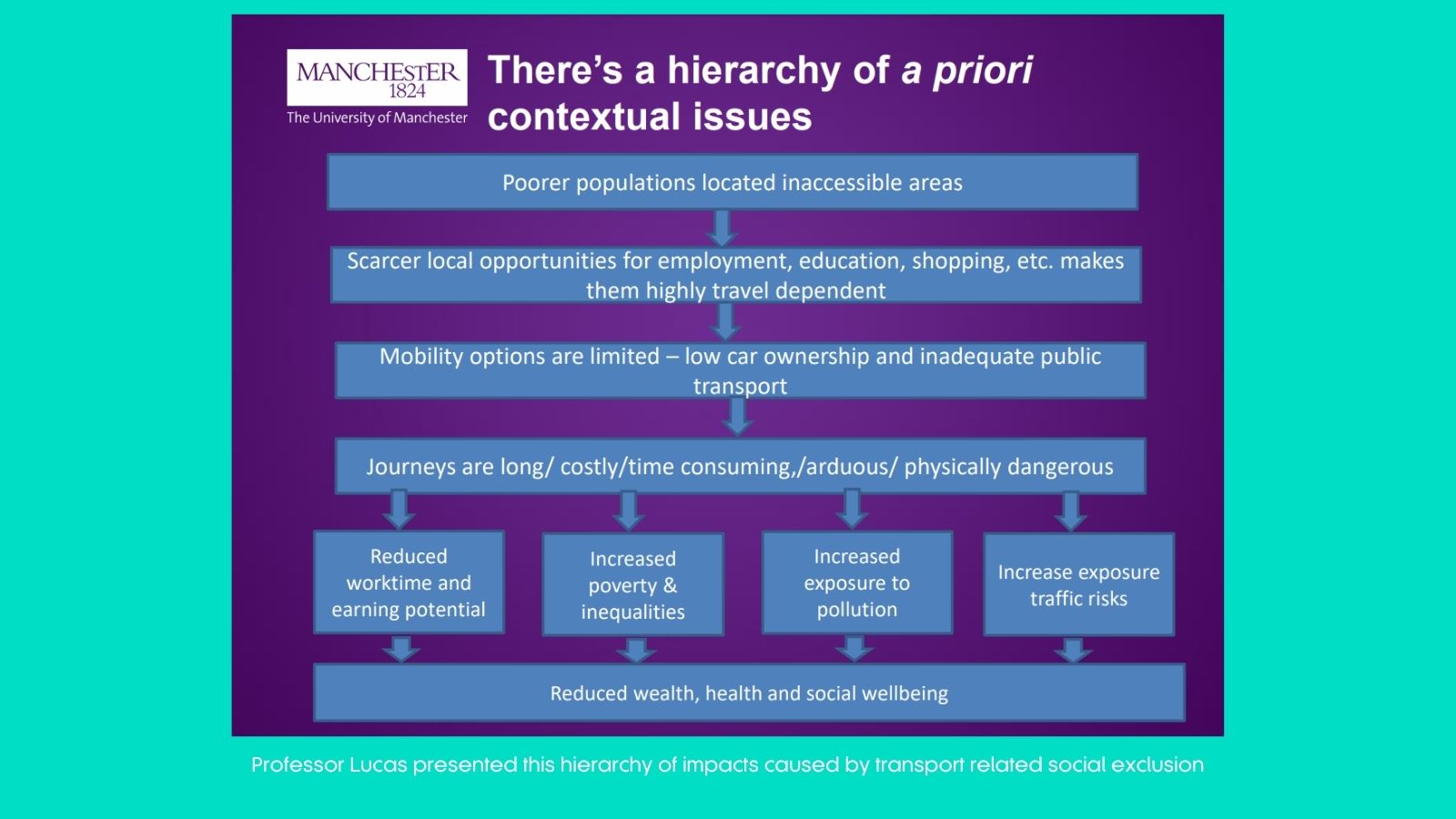
Professor Lucas then spoke about the example of an equalities impact assessment she led into the planned Lower Thames Crossing. This involved an in-depth baseline analysis and an assessment of the benefits with and without introducing mitigation measures. This included measurement of quantitative and qualitative indicators, such as access to services, air quality, and severance, and mapping all these impacts against local demographics, including levels of deprivation.
The work also involved speaking to large numbers of people living nearby, allowing the team to consider a much broader range of views than the limited demographic that tends to take part in consultations.
Critically, she said that accounting for those views does not need to slow down the development of transport projects. There are lots of opportunities to simplify assessment of transport schemes and talking to local people to understand impacts on people and places, ensuring much more effective interventions.
You can read one of Professor Lucas’s papers where she applies this approach to the construction of a bypass in South Wales here.
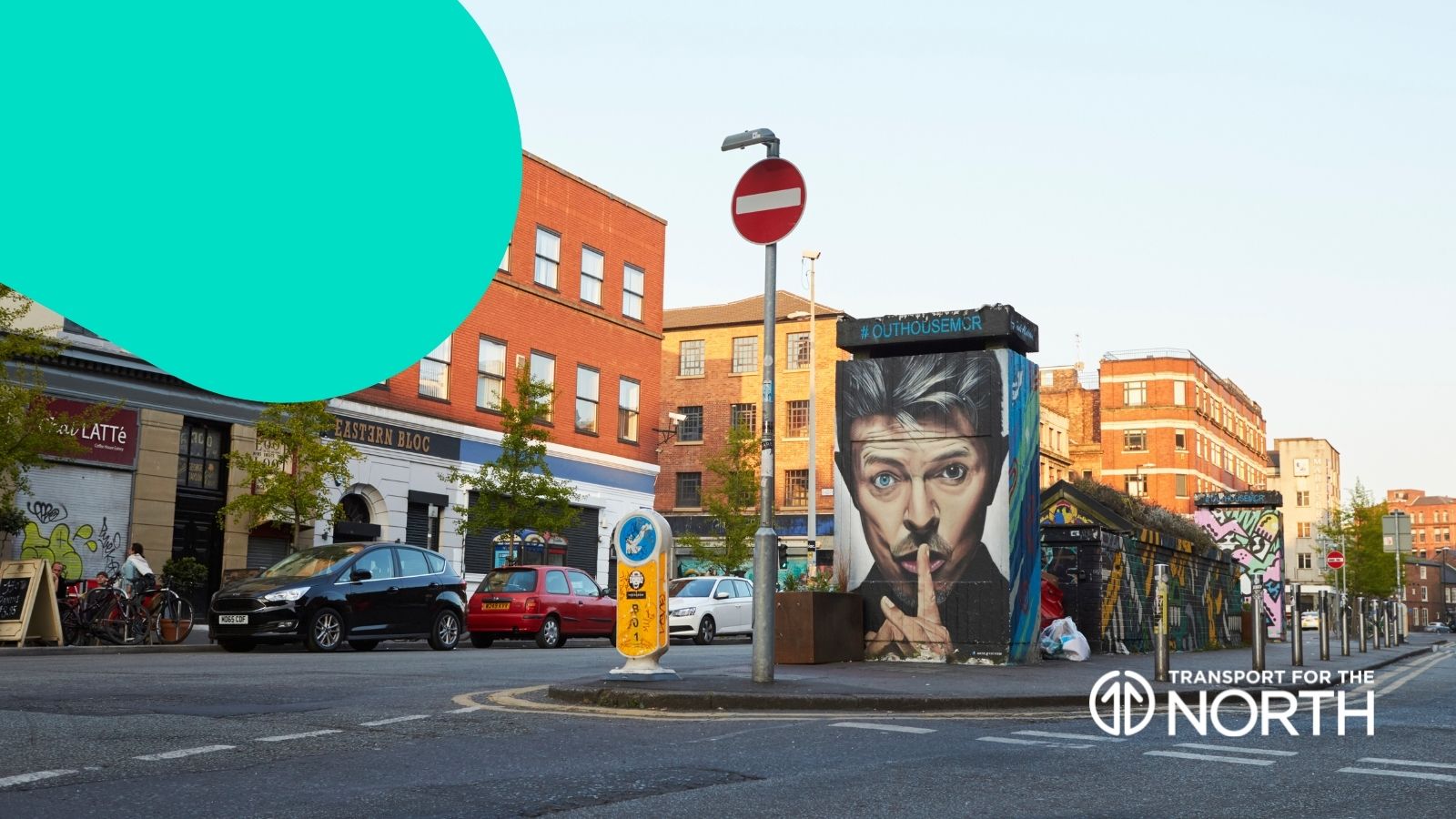
Dr Like jiang then spoke about measuring the impacts of transport noise. He pointed out that it is the second largest environment threat to public health in western Europe, experienced by millions of people.
The annual cost in England of urban road noise if £7-10 billion per year. 1dB increase in road noise from 79dB to 80 dB has an impact of £100 per year per household.
Impacts range from sleep disturbance to cardiovascular disease and lower productivity. He pointed out that we understand a lot about the impacts on residential areas, but not on public spaces.
Here, the impacts can be a lot more complex, and exposure can vary significantly between locations. However, there are new approaches available, such as soundscape crowd sourcing using apps that could provide a much better understanding of this.
Areas experiencing high noise levels tend to be more deprived than others He spoke about how rail noise impacts communities. For those who benefit from access to a station this may not be such an issue but around 40% of neighbourhoods experiencing high rail noise do not live within 800m of a station. This should be considered wherever new lines are built or lines are upgraded.
Watch the presentation in full:
However, we also need to consider that low engine noise may be linked to higher risk from traffic incidents. A case study of the A61 in Leeds showed that if all electric cars were electric cars, the loss of ‘disability adjusted life years’ would be reduced by 8.3%. Additionally, if all cars commuting under 5 miles were replaced by e-bikes (which don’t come with the problem of engine noise) there would be a reduction of 3.4%.
You can read more about his work in his paper here.
Finally, Joe McTigue spoke about Northern’s work understanding the wider impacts of the Northern Trains network on the North of England. Northern account for 2/3 of rail journeys in the North and is one of the region’s largest employers.
The company calculated that before the pandemic, using £500 million of government support the Northern network generated:
He also said many of these figures are likely to be a conservative estimate, which does not account for the levels of spending linked to trips by train, for example in the visitor economy, with visitors travelling by train spending around £30 on each trip. Alongside these economic benefits, rail is linked to significant emissions reductions compared to car, and reduced road congestion and air pollution.
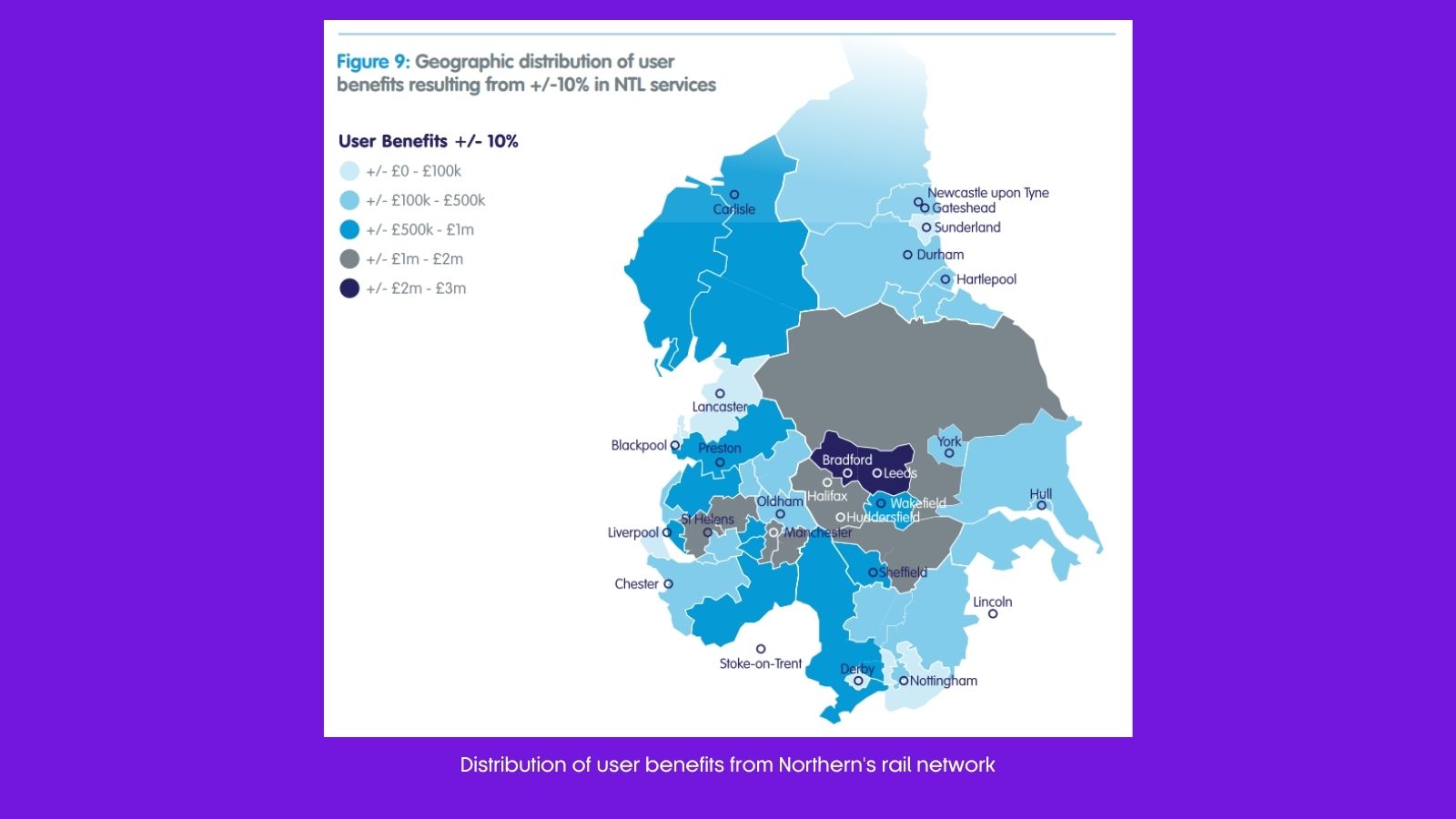
All types of benefits are also widely distributed throughout the North of England. This is not limited to major cities which contain Northern depots and / or offices like York, Leeds, and Manchester, and include large benefits to rural areas of North Yorkshire and Cumbria
Joe acknowledged that COVID-19 posed a major challenge for the rail network. However, he argued that rail still has a bright future, and this is evidenced by data showing a rapid return to rail in the North of England, particularly for tourism and leisure travel. However, rail operators are having to adjust to new commuter patterns, with demand varying between different weekdays.
All this evidence, he suggests, shows the value of rail is likely to be far greater than the government investment put into it during normal times and makes a strong case for continuing to expand the rail network and increase services.
You can read more about his paper here.